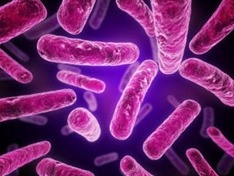However, the most insidious sexually transmitted diseases is that they often occur with little or no symptoms, and carriers are not even aware about their presence. So how to detect an illness or to verify its absence?
Beautiful goddess of beauty, love, spring and fertility, Venus has left us a legacy of not only the planet and a number of myths, diseases, named in her honor (although in honor?).
Sexually transmitted diseases are diseases caused by infection and is transmitted mainly through sexual contact. Usually, hearing this phrase from the lips of friends, people blush if they say something terribly embarrassing, or on the contrary become arrogant and fun to gossip about the “playboy”. For all this, they are absolutely sure that they’ll never touch. But never say…
Contrary to popular belief, this disease it is possible to “award” not only during physical intimacy, as some of his species are transmitted by oral to oral contact, kissing, and even household items.
The types of sexually transmitted diseases.
To start is to say exactly which disease belong to sexually transmitted.

The most common include:
- gonorrhea;
- syphilis;
- chlamydia;
- candidiasis;
- papillomavirus;
- cytomegalovirus;
- HIV infection;
- herpes.
In addition, here also include some diseases of the skin and intestine (scabies, pubic lice, molluscum contagiosum, etc.), which are also sexually transmitted.
The main symptoms of sexually transmitted diseases.
Among the most frequent symptoms of STDs include:
- burning and itching in the area of the external genitalia;
- spotting or even bleeding from the genitals (in women – between periods);
- multiple redness, vesicles, ulcers or warts in the anus or the genitals;
- frequent and very painful urination;
- purulent or unusual discharge from the genitals, etc.
Though the main symptoms of sexually transmitted diseases have many similarities, but each of them has its differences.
One of the very difficult-to-treat sexually transmitted diseases is syphilis.
The first symptoms can occur only after 3-4 weeks after the day of infection. One of them may become reddish spot on the vulva in women or the glans penis of men. Over time it begins to grow, it becomes more dense, and then takes the shape of a pea. The subsequent signs of infection are enlarged lymph nodes, located near the site of infection.
Some do not consider it a serious reason to go to the doctor, hoping that “self-will”. However, this is not the case. If you do not begin to treat the disease at this stage, after some time, the mucous membranes and the skin gets a rash. She’s usually pale pink or reddish-brown color. More time after the rash disappears, but soon reappears. If we talk about the last stage of syphilis, that its characteristic feature is the appearance of sifilide – tubercles with the collapse of the tissue, after healing resulting in unsightly scarring.
Another common sexually transmitted disease is gonorrhea.
Its symptoms include:
- copious purulent discharge from the urethra;
- frequent and painful urination.
The main danger of this disease lies in the fact that it is without proper treatment often leads to infertility (both female and male).
Stage of sexually transmitted diseases.
Venereal disease, like many others, can occur in 2 main forms – acute and chronic.

While the acute form develops in cases where after intrusion was a short period of time and the disease is manifested by symptoms. If the acute form can not be cured, she will go into a chronic. While the signs of disease disappear or be only slightly pronounced, so you might think that the disease went away by itself. This is the danger of sexually transmitted infections. In fact, the symptoms went away only because the body ceased to fight the disease and she is already firmly entrenched in your body. To detect the disease at this stage is possible only after passing special tests.
The danger of the chronic stage, in addition to severe health effects and complicated treatment lies in the fact that the person feels absolutely healthy, and therefore may unintentionally contribute to its spread.
At the same time discovered an interesting fact, which States that women are significantly more likely to receive from men a “surprise” than Vice versa.
Treatment of sexually transmitted diseases.
The branch of medicine whose main purpose is the diagnosis, prevention and treatment of sexually transmitted diseases, is called venereology. In remote antiquity of this science still has not heard, however, venereal diseases already existed. The symptoms of these deadly diseases has been described in the manuscripts of scientists in China, India, Egypt, Greece, created a thousand or more years BC.
Fortunately, thanks to the emergence of highly effective drugs, the death rate from sexually transmitted diseases is significantly reduced, and with the help of modern diagnostic methods, it became possible to identify the existence of pathogens before a disease will be in the “point of no return”. In addition, new diagnostic methods have allowed to detect previously unknown infection. So if you suddenly notice any symptoms of sexually transmitted diseases, you should immediately seek assistance from a doctor.
Remember that the treatment of sexually transmitted infections is not easy, and it can be handled only by a qualified doctor. Folk and especially family cures do not exist, and their use may lead to serious consequences.
Especially dangerous is the presence of any sexually transmitted diseases for women during pregnancy and lactation. So, the children of those who had named the period with chlamydia, doctors often find conjunctivitis, bronchitis, atypical pneumonia, and sometimes it becomes impossible to pathologies of the brain or even death of the unborn baby. The most unsafe diseases of this kind for pregnant women are herpes, chlamydia and cytomegalovirus. In addition, almost all of them, with rare exceptions, are automatically passed to the newborn baby from his mother.
We should not forget about one of the main principles of successful recovery from sexually transmitted diseases – the principle of the simultaneous examination and treatment of both sexual partners, even in the event that any of the analysis they found no signs of the disease. The fact that one partner may be an asymptomatic carrier, so the treatment must go together.
Also remember that the best options for prevention of sexually transmitted diseases, besides abstinence, are the presence of a regular partner and condom use.
Well, about intimate hygiene should not be forgotten. Love each other without risk to health!



